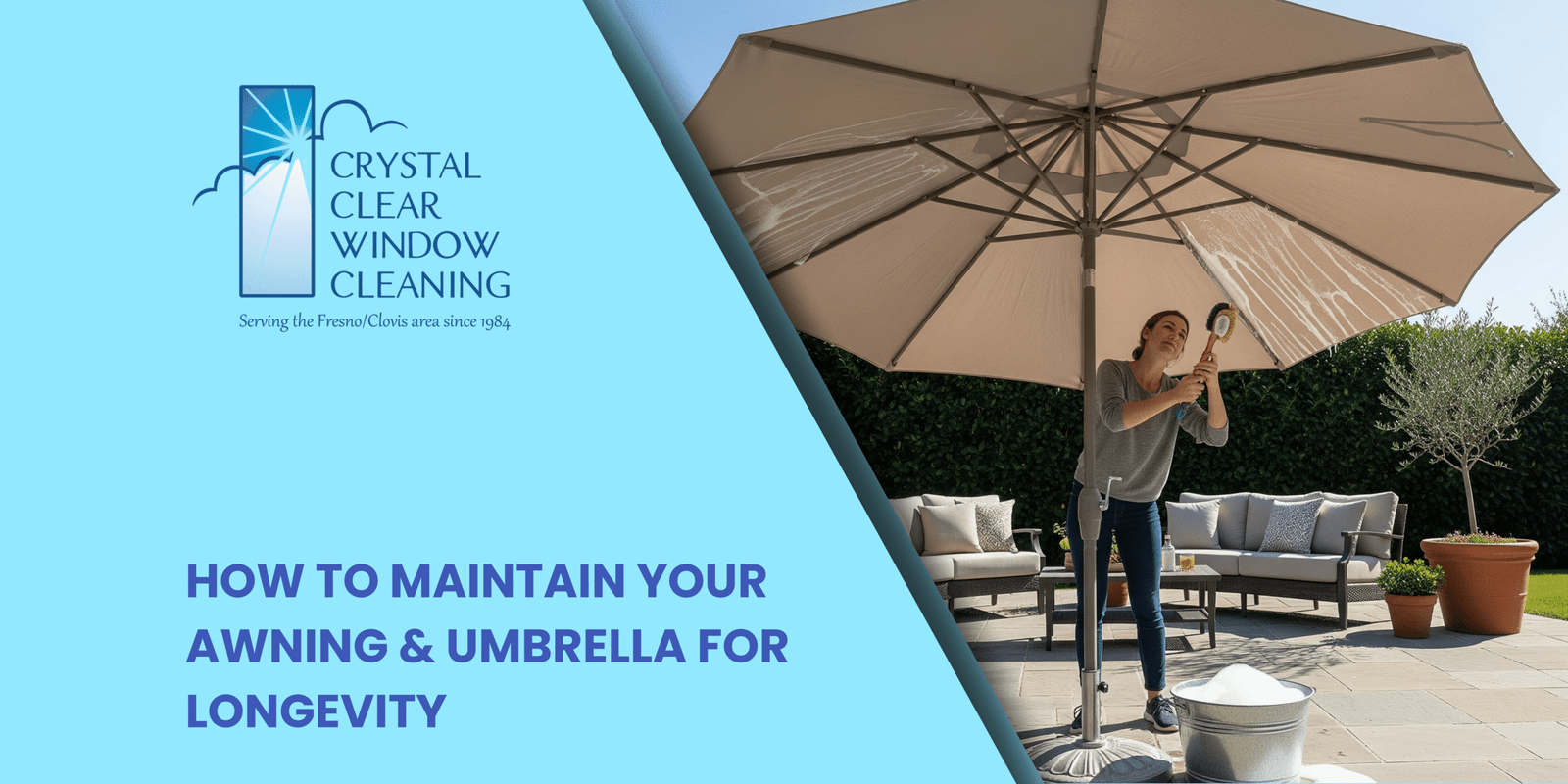Awnings and outdoor umbrellas are essential additions to any patio, deck, or garden area. They provide shade, enhance curb appeal, and protect you from the sun’s harsh rays. However, like any outdoor fixture, they require regular maintenance to keep them functional and looking great year after year.
In this guide, we’ll cover everything you need to know about maintaining your awning and umbrella for long-lasting use, ensuring you avoid costly repairs or premature replacement.
Why Proper Maintenance Matters
Outdoor umbrellas and awnings are constantly exposed to the elements, sun, wind, rain, dirt, and even bird droppings. Over time, these factors can cause fabric fading, mold buildup, frame corrosion, and mechanical damage.
Benefits of Regular Maintenance:
- Extends the life of your shade structures
- Keeps fabrics vibrant and clean
- Prevents mold, mildew, and rust
- Ensures smooth operation and safety
1. Clean the Fabric Regularly
Whether you have a canvas or synthetic material, cleaning is the first step to longevity. Avoid harsh chemicals, and use mild soap with lukewarm water.
Cleaning Steps:
- Remove loose dirt with a soft brush.
- Mix water with a mild soap (like dish soap).
- Scrub gently with a sponge or soft cloth.
- Rinse thoroughly and allow it to air dry completely.
Tip: Never store the umbrella or retract the awning while wet, it can lead to mold and fabric deterioration.
2. Inspect for Mold and Mildew
Even if you’re diligent, moisture and organic debris can cause mold and mildew. Check corners, seams, and folds.
Prevention & Treatment:
- Ensure full drying before storage
- Apply fabric protectant or mildew-resistant sprays
- Spot-treat with vinegar and water (test first on a small area)
3. Protect from Harsh Weather
Wind and rain are two major enemies of awnings and umbrellas. Wind can bend frames or tear fabric, while rain can lead to sagging and water pooling.
Weather-Related Tips:
- Retract or close awnings and umbrellas during storms or heavy winds
- Install wind sensors for motorized awnings
- Use wind-stabilizing bases for freestanding umbrellas
4. Lubricate Moving Parts
Hinges, cranks, and sliders should move smoothly. Over time, exposure to dust and weather can cause them to jam or squeak.
Lubrication Guide:
- Use silicone-based lubricants (not WD-40)
- Wipe away excess grease to avoid attracting dirt
- Apply 2–3 times per season or as needed
5. Store During Off-Season
If you live in an area with harsh winters, store your umbrella and retractable awning during colder months.
Proper Storage Tips:
- Clean thoroughly before storing
- Ensure everything is 100% dry
- Use fabric storage bags or protective covers
- Store in a dry, climate-controlled space
6. Tighten Screws and Check for Rust
Seasonal expansion and contraction can loosen screws and bolts, affecting the integrity of the frame.
Maintenance Checklist:
- Inspect fasteners on the frame and hardware
- Tighten all screws and bolts
- Remove rust using a soft brush and apply rust-inhibiting primer/paint
7. Use UV and Water Repellent Sprays
After cleaning, consider applying UV-protection and waterproofing sprays to your umbrella and awning. This helps reduce fading and weather damage.
Why It Helps:
- Maintains color vibrancy
- Repels water to prevent saturation and mold
- Increases resistance to environmental wear and tear
Always test the spray on a small section before full application.
8. Replace Parts as Needed
It’s better to replace a small part now than wait until the entire unit fails. Most umbrellas and awnings have replaceable parts like canopy fabric, crank handles, or pivot arms.
Common Replaceable Parts:
- Canopy fabric
- Crank mechanisms
- Mounting brackets
- Rope and pulley systems
Regular inspections can help you catch problems early.
Conclusion: Small Maintenance Efforts, Big Longevity Rewards
Maintaining your awning and umbrella isn’t complicated, but it does require consistency. These simple steps will extend the life of your outdoor shades, protect your investment, and keep your backyard or patio looking beautiful season after season.
Don’t wait for wear and tear to take over; preventive care is the key to durability and performance.

